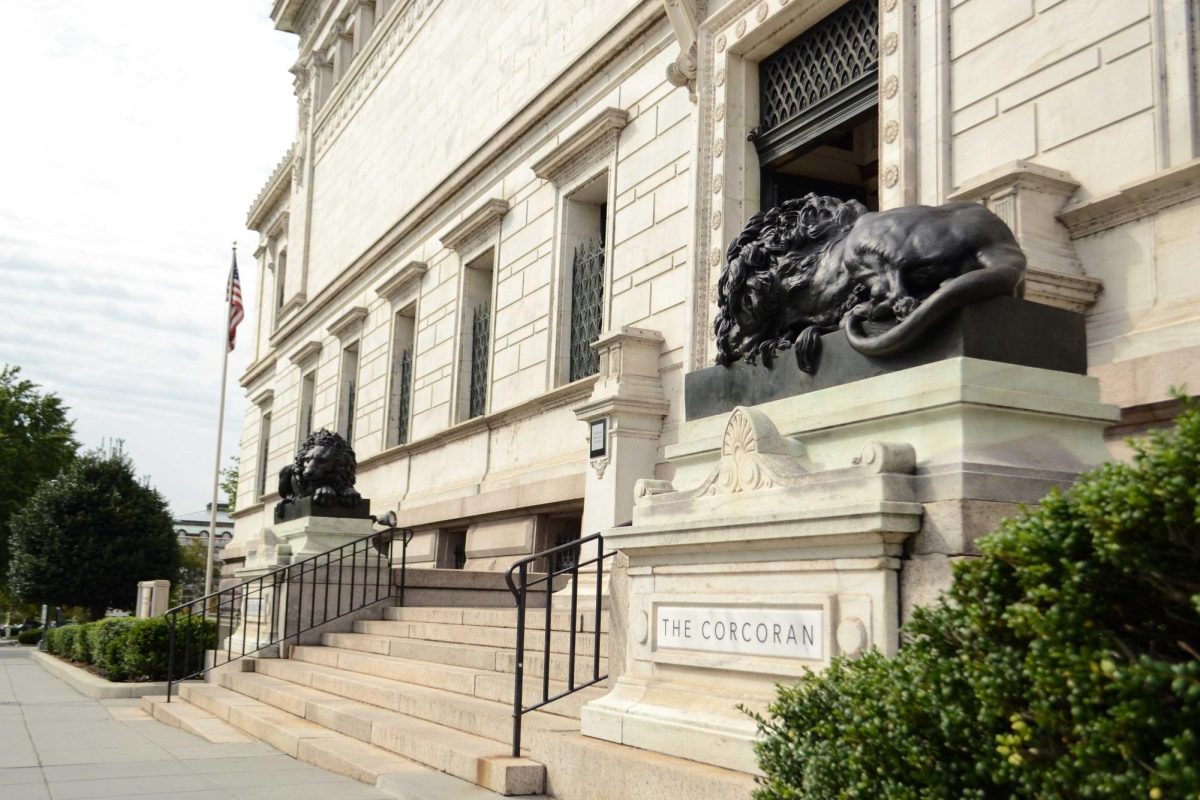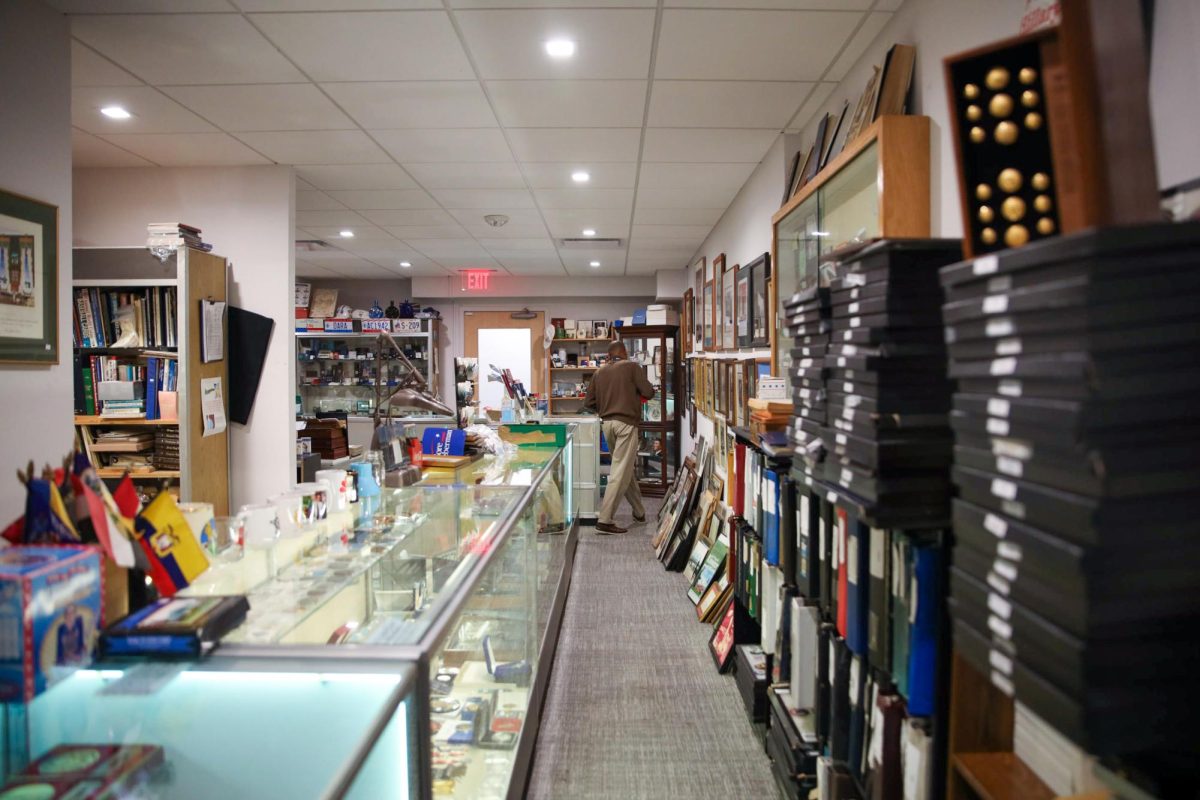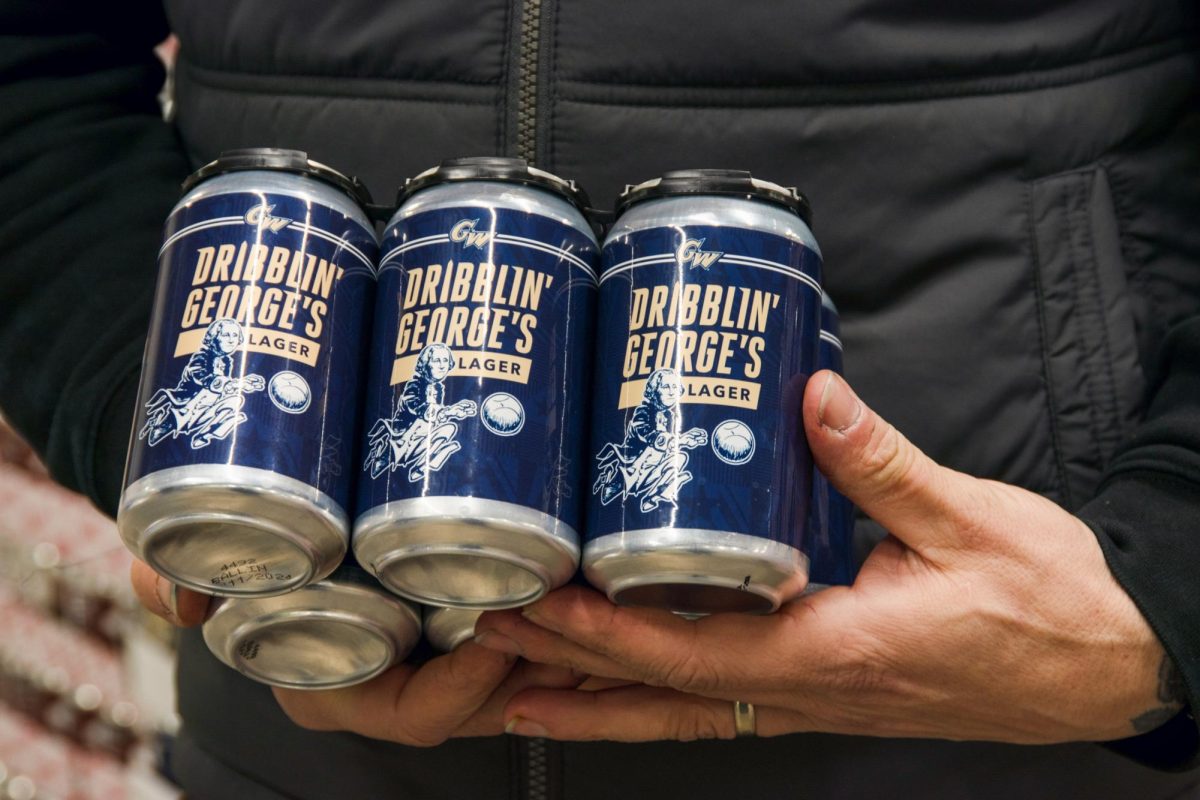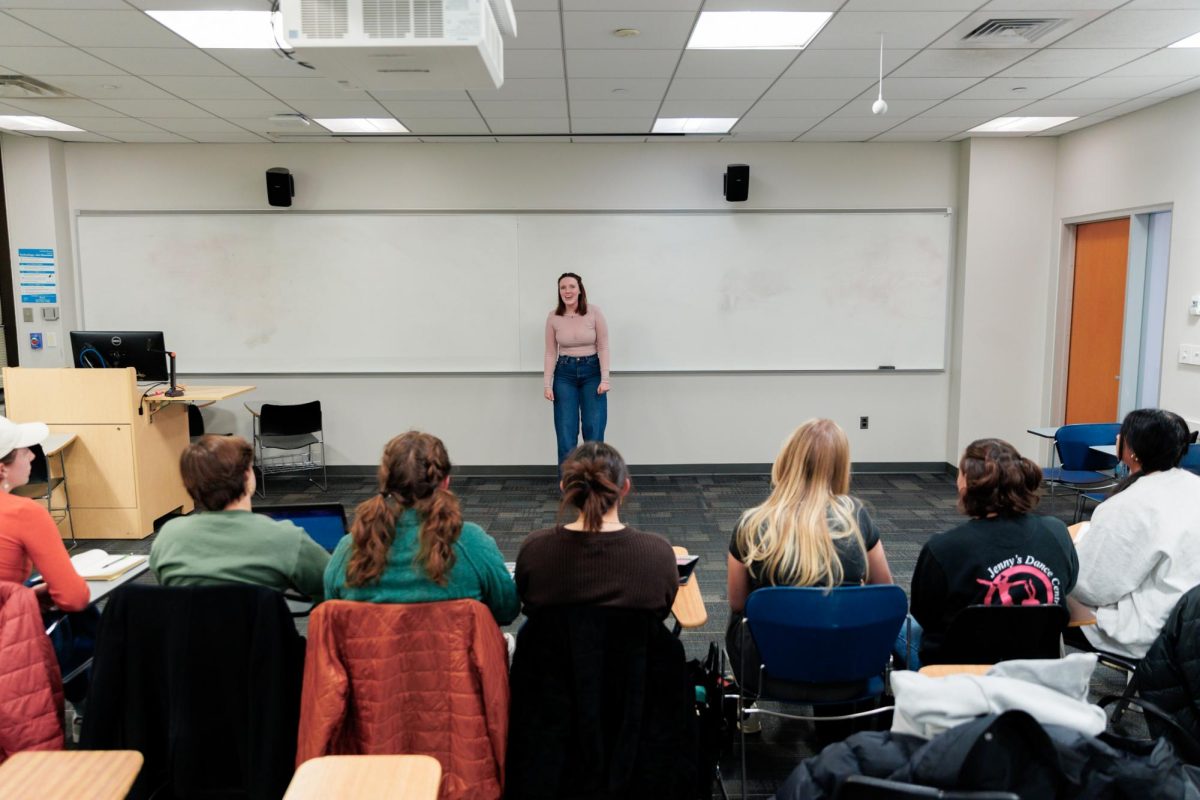A pink-colored variant of the pixelated fire found in Minecraft greets visitors to the Flagg Building as the flame lights up art from students around GW.
This is what viewers will find when they enter the “next NEXT_” art exhibit, featuring the work of seven student artists, in the Corcoran School’s flagship building across the street from The Ellipse. The exhibit, curated by junior MC Daubendiek, seeks to remind Corcoran students that their work has a place on the Flagg Building’s walls, while also demonstrating that the often empty and quiet building doesn’t always need to be that way.
“It’s kind of an uncanny valley activation of the space,” Daubendiek said. “I’m trying to remind you of what could be instead of what is.”
Daubendiek said a few different areas throughout the Flagg Building and especially in the student lounge often felt empty and “dead.” She said the student lounge isn’t a space students tend to congregate in, and one of the main goals of the exhibit was to highlight the emptiness felt by many students in the home of the Corcoran School. That was a key reason she decided to stage the exhibition in the cavernous, mostly empty student lounge.
“When I take it all down, that’s the experience I’m really interested in,” she said. “I’m curious to see what it’s like for the students when they see the space naked and barren, but also in its actual homeostasis — and its actual homeostasis is kind of depressing.”
Daubendiek said one of the most notable parts of the exhibition is that it prominently features artwork generated by artificial intelligence, like magazine covers of fake buildings. The decision to feature such art is not without detractors: Critics have argued that AI draws from the styles and works of other artists and thus is a form of stealing and not a form of art.
Daubendiek said she disagrees with that characterization of the use of AI in modern works of art, saying that as long as human ingenuity is a part of the creation, it can help create new works.
“You can use it to make art — which is what we’re doing here,” Daubendiek said. “There needs to be the human aspect in it and the intention of making something.”
Daubendiek said, however, that simply using AI to generate a “piece of wall art,” perhaps inputting a command for an AI art generator to make something pretty, was not a valid use of AI for artistic purposes, and AI should only be used to create art if there is a clear intention and justification for its use. She said that AI can be a powerful tool in the creation of art, as long as the artists who choose to use it are careful and know precisely what they hope to gain from its use.
“Like a child making a drawing is not making an artwork, but if someone were to go back and get their childhood drawings and hang them on the wall, there’s a certain amount of intention behind that,” Daubendiek said.
One work on display that utilizes AI is a series of magazine covers mounted on the wall next to one of the lounge’s artificially lit fireplaces, a piece created by junior Jared Semisch to demonstrate how lifelike AI can be. Each magazine cover features a grandiose piece of architecture, like a marble rotunda or a picturesque villa, appearing to highlight wonders that would fit perfectly along the Mediterranean coast — but none of the buildings featured are real, and closer inspection reveals that the titles of each magazine are not written in any discernible language.
The exhibition also features numerous works that aren’t AI generated, including four paintings by sophomore Benjamin Cunningham exploring queer experiences throughout history, as well as a video featuring various landscapes and wildlife in the District shot by Daubendiek in the main room of the lounge.
The second room of the lounge features a pair of sculptures — a plaster recreation of a torso and an almost tent-like structure held up by sticks — by sophomores Ryan Geoghegan and Gigi Pilla accompanied by a white, ghost-like tapestry by Chris Koppi on the wall.
Daubendiek said the artists didn’t necessarily intend to display their pieces in a show — and that was an important factor for her when deciding which works to include in the exhibit.
“The intention of the show was like, ‘Give me something that’s been sitting in your studio,’ so we get student work up on the walls,” Daubendiek said. “I wasn’t necessarily picky about the kind of work that was in the show, whether it was something I preferenced or not. I just wanted to find a way to make it easier for students to get their art displayed.”
The next NEXT_ exhibition is on display Monday through Friday from 9 a.m. to 5 p.m. until Oct. 2 in the student lounge of the Flagg Building.





